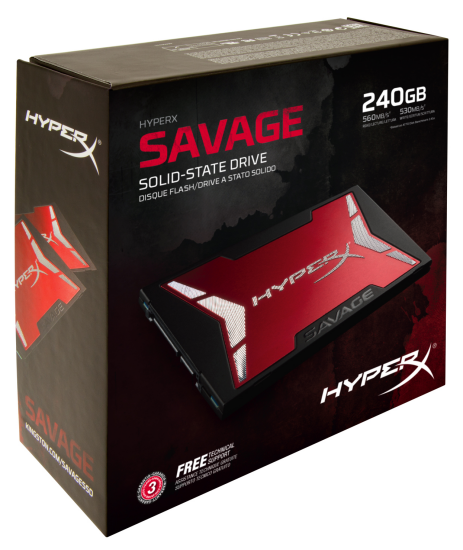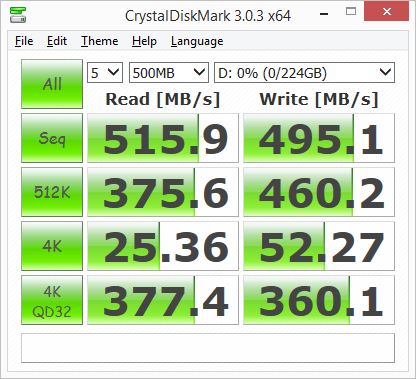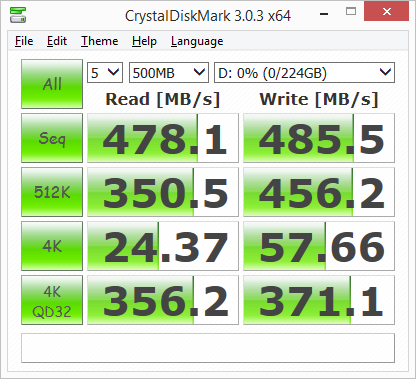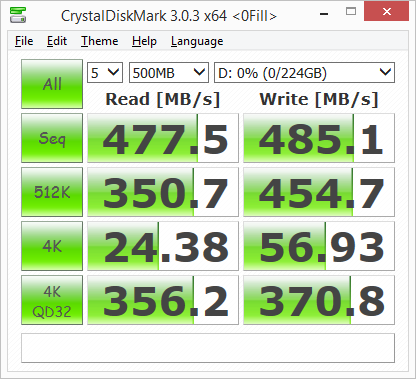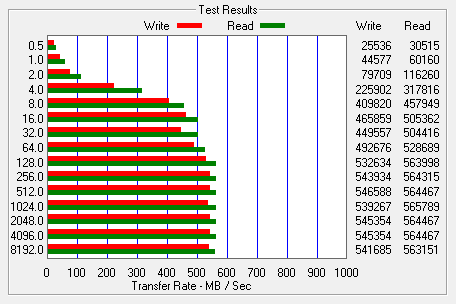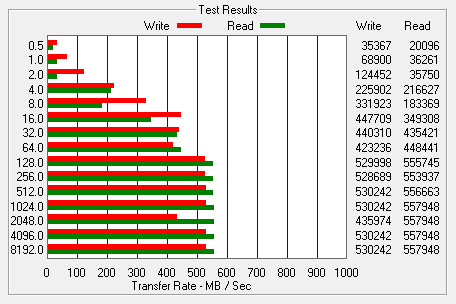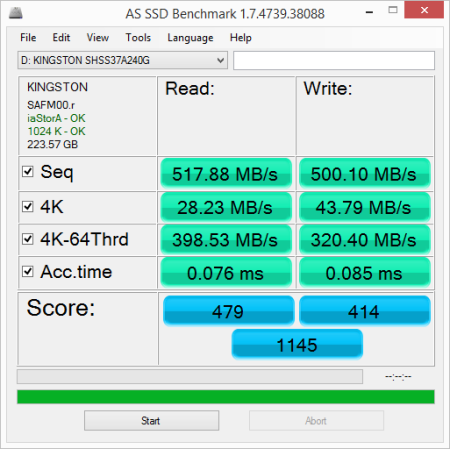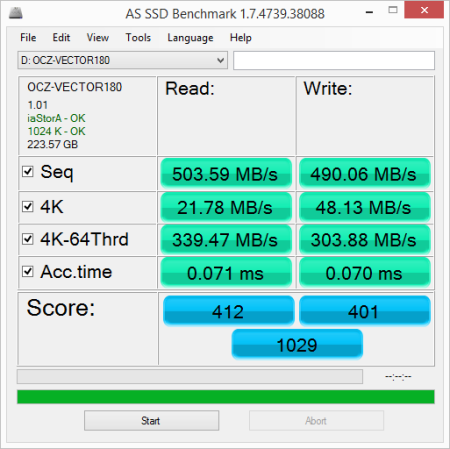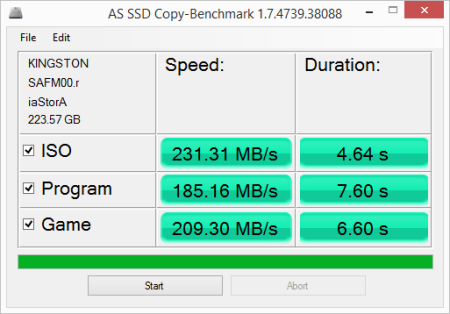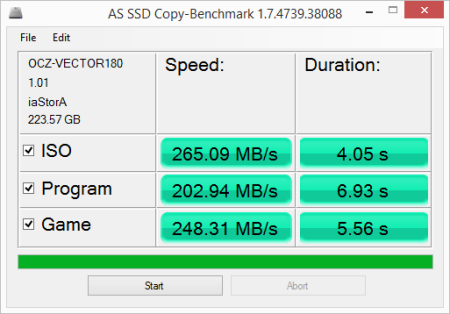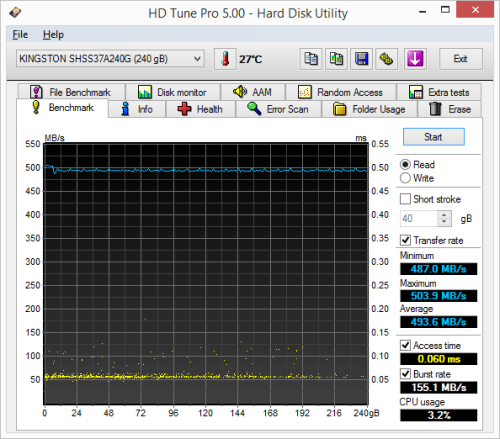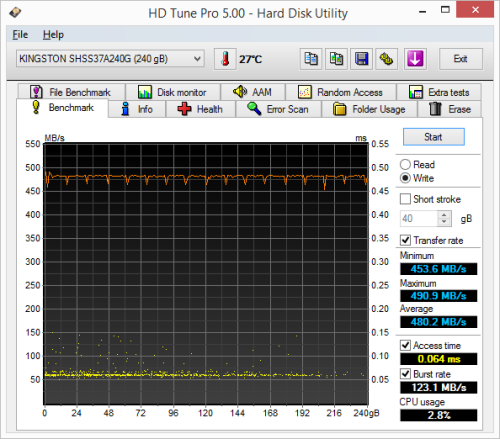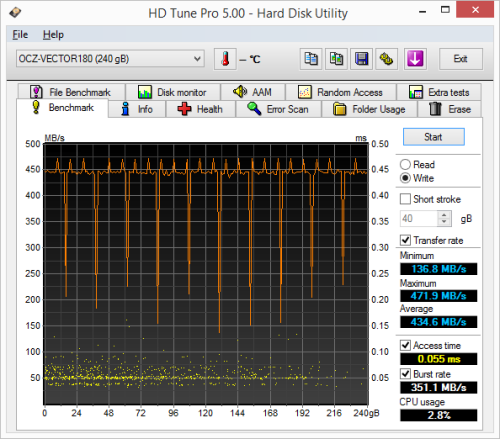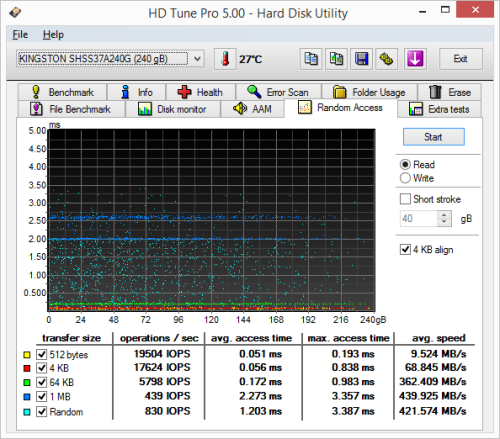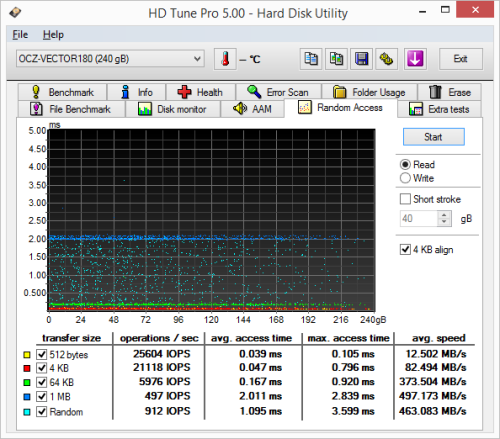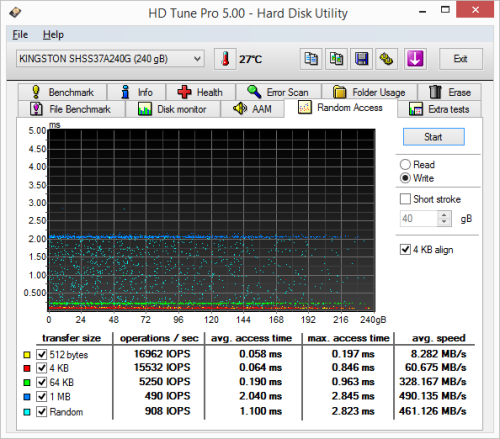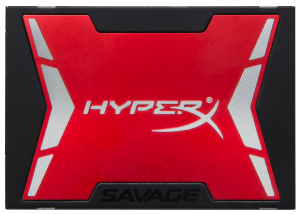

Model: Kingston HyperX Savage 240GB Solid State Drive
Manufacturer: Kingston
Provided By: Kingston
As the world’s largest independent manufacturer of memory products, Kingston Technology doesn't need much of an introduction. The company got its start in 1987, when the computer industry was suffering from a severe shortage of surface-mount memory chips. To provide a solution, Kingston's founders designed a new Single In-Line Memory Module (SIMM) that used readily available, older technology through-hole components. Today, Kingston offers more than 2,000 memory products including SD cards, SSD drives, memory modules and USB flash drives for consumers, businesses, enterprises and system builders.
 One of the latest additions to Kingston's line of solid state drives is the HyperX Savage. Designed to satisfy the most demanding consumers, enthusiasts and gamers, the Savage is the fastest SATA-based SSD in the HyperX family. The drive is powered by a quad-core, eight-channel Phison PS3110-S10 controller and is equipped with up to 960GB of Toshiba's Advanced 19nm (A19) MLC NAND flash. With sequential speeds of up to 560 MB/s read and 530 MB/s write, and IOPS of up to 100,000 read and 89,000 write, the HyperX Savage offers higher performance, ultra-responsive multitasking and an overall faster system.
One of the latest additions to Kingston's line of solid state drives is the HyperX Savage. Designed to satisfy the most demanding consumers, enthusiasts and gamers, the Savage is the fastest SATA-based SSD in the HyperX family. The drive is powered by a quad-core, eight-channel Phison PS3110-S10 controller and is equipped with up to 960GB of Toshiba's Advanced 19nm (A19) MLC NAND flash. With sequential speeds of up to 560 MB/s read and 530 MB/s write, and IOPS of up to 100,000 read and 89,000 write, the HyperX Savage offers higher performance, ultra-responsive multitasking and an overall faster system.
The HyperX Savage is available in 120GB, 240GB, 480GB and 960GB capacities and is sold as a stand-alone SSD or with an upgrade bundle kit. For this review, Kingston sent us the 240GB upgrade bundle kit. The 240GB version of the HyperX Savage is capable of delivering up to 560 MB/s sequential read and 530 MB/s sequential write speeds as well as up to 100,000 random read and 89,000 random write IOPS.
| Kingston HyperX Savage 240GB Solid State Drive | |||||||||||||||||||||||||||||||||||||||||||||||||||
General Specifications
Performance
Reliability
Power Consumption
Environmental
Dimensions and Weight
Other Features
|
Needless to say, this is only a taste of what the HyperX Savage has to offer. To give you an idea of what to expect, we'll take a closer look at Kingston's new SSD and then see how well it performs. Does the HyperX Savage have what it takes? Can it deliver the performance we've come to expect from Kingston? Keep reading as we find out.
The HyperX Savage comes in an attractive black and red box. Along with a picture of the drive, the front advertises many of its key features including its 240GB capacity, rated speeds and three year warranty. The back of the box provides a bit more information as well as pictures of the box's contents.
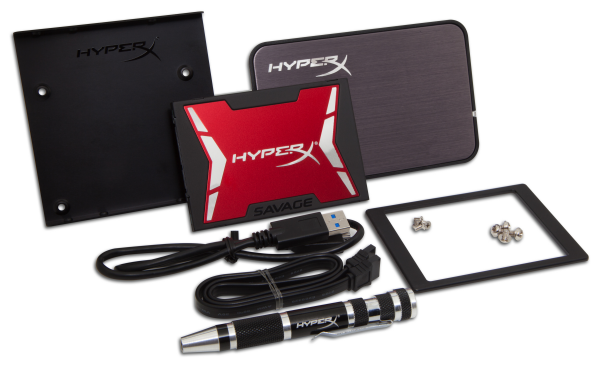
The upgrade bundle kit that Kingston sent us for this review includes a number of accessories. Along with the HyperX Savage SSD you'll find a 2.5" USB 3.0 enclosure with a USB-to-mini-USB cable, multi-bit screwdriver, SATA data cable, 3.5" adapter bracket with screws, HyperX sticker and a small piece of paper with an activation key for Acronis True Image HD software.
Physical Features:
While a bit heavier than other SSDs, the HyperX Savage is very well constructed. The drive's outer casing is made entirely out of metal and is covered by a matte black finish. Along with the Savage name in glossy black, the top has a red, brushed aluminum insert with chrome highlights and a large "HyperX" logo on it.
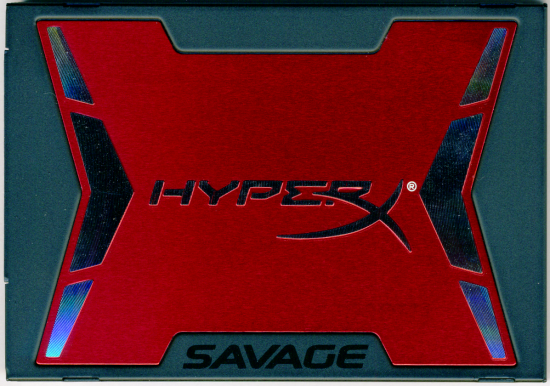
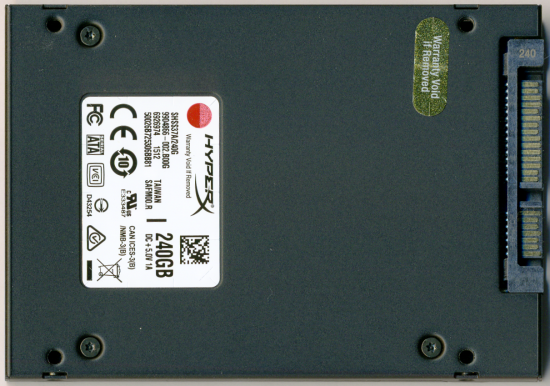
The HyperX Savage uses Phison's new PS3110-S10 controller chip. The PS3110-S10 is powered by a quad-core CPU and supports up 8 NAND flash channels as well as features like end-to-end data path protection, SmartECC error correction and AES encryption. The controller also supports Device Sleep (DEVSLP) but for whatever reason it is not enabled on the HyperX Savage.
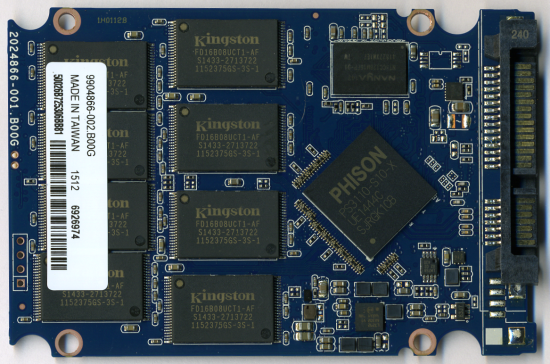
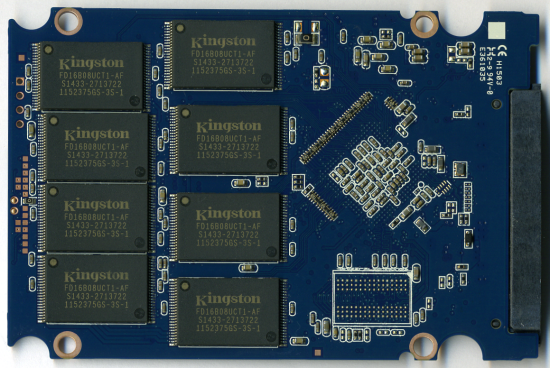
For the 240GB HyperX Savage, Kingston opted to use Toshiba's A19nm MLC NAND flash modules. Looking at the pictures above, you can see that there are eight of these 16GB NAND flash packages on either side of the PCB. The drive also has a single 256MB Nanya DDR3L-1600 SDRAM memory chip that is used for caching and garbage collection.
The test system used in this review was an HP 8200 Elite. The computer came equipped with an Intel Core i5-2400 CPU, 4GB of DDR3 1333MHz memory, Seagate Barracuda 7200.12 ST3250312AS 250GB SATA 6 Gb/s hard drive, NVIDIA Quadro FX580 512MB PCIe graphics card and an Intel 82579-LM gigabit network card. For the operating system, I installed a fresh copy of Windows 7 Enterprise.
To test the performance of Kingston's HyperX Savage SSD, I ran a series of benchmarks using CrystalDiskMark 3.0.1, HD Tach RW 3.0.4.0, ATTO Disk Benchmark 2.46, AS SSD, HD Tune Pro 5.00, Anvil's Storage Utilities, Iometer and PCMark 8. For comparison, I've also included test results from the Crucial MX200, OCZ Vector 180, Kingston BX100, Samsung 850 EVO M.2, Samsung 850 EVO mSATA, AMD Radeon R7, Silicon Power Slim S80, Samsung SSD 850 EVO, OCZ ARC 100, SanDisk Ultra II, Kingston MX100, SanDisk Extreme Pro, Samsung SSD 850 PRO, Plextor PX-256M6S, Toshiba Q Series Pro, Plextor PX-256M6M, Samsung SSD 840 EVO mSATA, OCZ Vector 150, OCZ Vertex 450, Silicon Power Slim S55, Samsung SSD 840 EVO, Seagate 600 SSD, SanDisk Extreme II, OCZ Vector, Plextor PX-256M5Pro Xtreme, and Samsung SSD 840 Pro.

As I mentioned earlier, the HyperX Savage is based on Phison's PS3110-S10 controller chip. Looking at the screenshot above, you can see that it performs equally well with both incompressible (0%) and compressible (100%) data.
CrystalDiskMark 3.0.3:
First, I ran a few quick tests using CrystalDiskMark. This benchmark tool measures the performance of a storage device by testing its sequential read and write speeds as well as its random read and write speeds using blocks 512K and 4K in size.
According to Kingston, the 240GB HyperX Savage is capable of reading at 560 MB/s and writing at 530 MB/s when connected to a SATA 6 Gb/s port. While the drive performed well, it came up a bit short of these numbers in CrystalDiskMark's sequential read and write speed tests.
The HyperX Savage performed equally well when using highly compressible 0x00 (0 Fill) data. This time around, the drive was able to read at 516.9 MB/s and write at 495.1 MB/s.
HD Tach RW 3.0.4.0:
Next, I used HD Tach to test the HyperX Savage's read, write and burst speeds as well as its seek times and CPU usage.
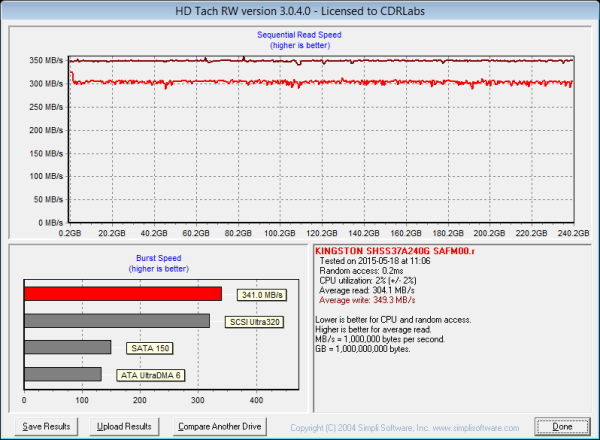
Kingston HyperX Savage 240GB
Looking at the screenshot above, you can see that the HyperX Savage had average read and write speeds of 304.1 MB/s and 349.3 MB/s respectively, as well as a burst speed of 341.0 MB/s.
ATTO Disk Benchmark 2.46:
I also used ATTO Disk Benchmark to test the HyperX Savage's sequential read and write speeds. The tests are run using blocks ranging in size from 0.5KB to 8192KB and the total length set to 256MB.
When tested with ATTO, the HyperX Savage's read speeds topped out at about 565 MB/s and its write speeds at 546 MB/s.
AS SSD:
AS SSD is a relatively new benchmark designed specifically for solid state drives. The application contains five synthetic tests used to determine the sequential and random read and write performance of a drive.
AS SSD also includes a copy benchmark. This test copies an ISO (two large files), program (many small files) and game (small and large files), returning the speed and duration of each.
HD Tune Pro 5.00:
Next, I ran a series of tests using HD Tune Pro. This hard disk utility measures a drive's performance by testing its sequential read and write speeds as well as its access time, burst rate and CPU usage. For this review, I'm also going to use it to benchmark the HyperX Savage's random read and write speeds, random access times and the number of operations per second.
The HyperX Savage performed very well when benchmarked with HD Tune. The drive had average read and write speeds of 493.6 MB/s and 480.2 MB/s, respectively, and a burst rate of 155.1 MB/s when reading.
The HyperX Savage didn't disappoint when doing random reads and writes. When writing 4KB blocks, the drive reached 15,532 IOPS and had an average speed of 60.675 MB/s. The HyperX Savage was even faster when reading, reaching 17,624 IOPS with an average speed of 68.845 MB/s.
Anvil's Storage Utilities:
Anvil's Storage Utilities is another new benchmark designed with SSDs in mind. The standard storage benchmark measures a drive's performance by testing its transfer speeds, access times and IOPS.

Iometer:
Lastly, I ran a series of tests using Iometer. This tool can be configured to benchmark a number of things. In this case, I used it to measure the HyperX Savage's read and write speeds and the number of operations per second. The tests were run using random bytes and a queue depth of 3.
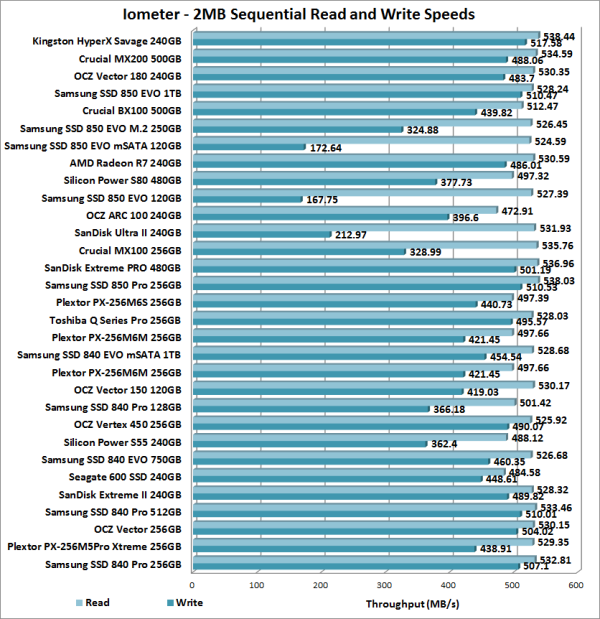
The HyperX Savage's performance was very similar to what we saw in our other tests. The drive was able to read at 538.44 MB/s and write at 517.58 MB/s.

The HyperX Savage also performed very well when doing random reads and writes. In our tests, the drive was able to read at 144.08 MB/s and write at a blazing 336.08 MB/s.
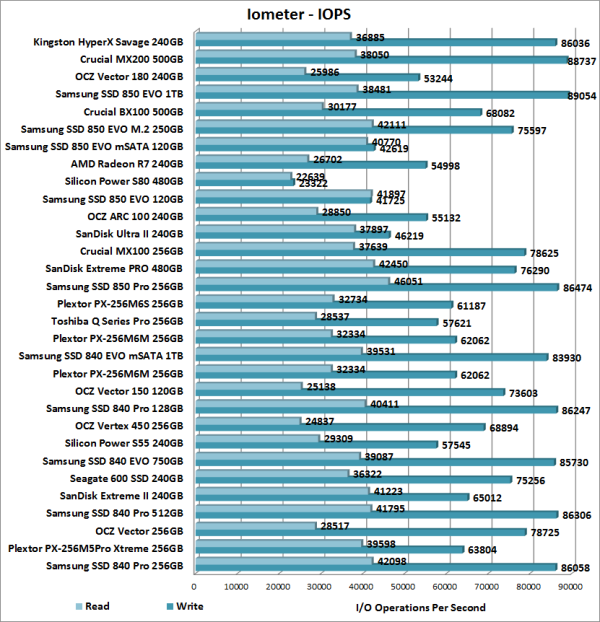
According to Kingston, the HyperX Savage is capable of delivering a maximum of 100,000 IOPS when reading and 89,000 IOPS when writing 4K blocks. In our tests, the drive reached 36,885 random read IOPS and 86,036 random write IOPS. Increasing the queue depth had little impact on the HyperX Savage's random write performance. However, with the queue depth set to 32, the drive was able to reach 92,576 random read IOPS.
PCMark 8 - Storage Test:
PCMark 8 is a complete benchmark for Windows. It includes five benchmark tests, each designed around a specific scenario. The storage benchmark measures drive performance using real-world traces recorded from Adobe Creative Suite, Microsoft Office and a selection of popular games.

PCMark 8 also includes a consistency test which measures the performance consistency and degradation tendency of a storage system. The test reports the performance level at the start, the degraded steady-state and the recovered state as well as the number of iterations required to reach the degraded state and the recovered state. For this test, we are focusing on the Adobe Photoshop (Heavy) trace and will look at both the bandwidth and latency of the drive
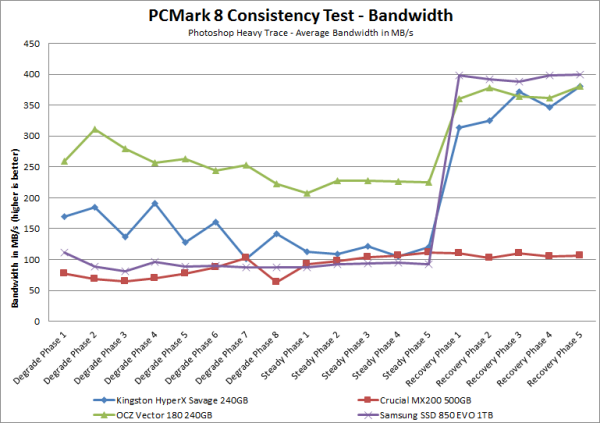
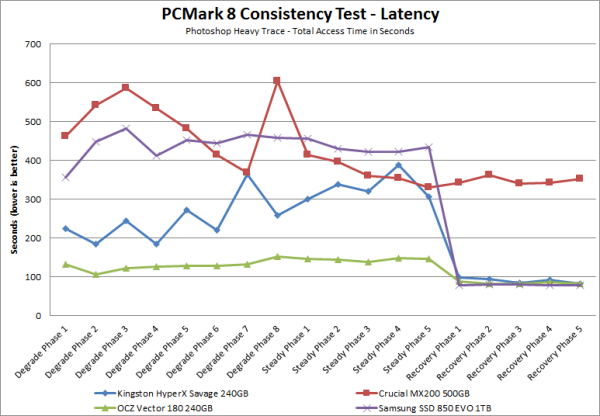
The HyperX Savage did fairly well throughout PCMark's consistency test. While not nearly as fast as the Vector 180, it performed better than both the 850 EVO and MX200 throughout the degradation and steady state phases. More importantly, the HyperX Savage had no problems bouncing back during the recover phase.
TRIM Performance:
While SSDs offer many benefits, there are some downsides to using flash memory. One of the biggest issues people run into is performance degradation. Over time, an SSD will run out of fresh blocks and will have to write over data the file system has marked as deleted. This procedure is very complicated and can slow an SSD's write speeds considerably.
To address this problem, most manufacturers have added TRIM support to their SSDs. The TRIM command allows an operating system, such as Windows 7, to tell an SSD which data blocks are no longer in use. Using this information, the drive proactively erases these blocks and adds them to the free block pool.
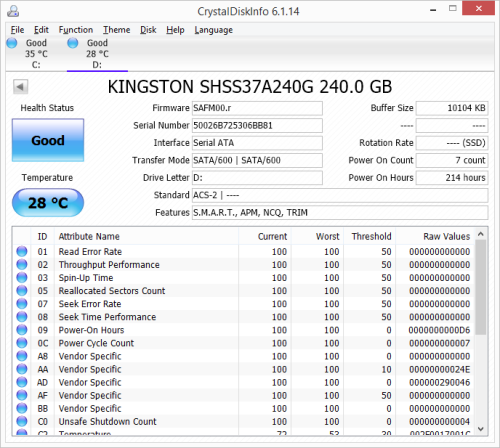
To test the HyperX Savage's TRIM and garbage collection functions, I first put the drive in a "dirty" state. I used Iometer to fill the entire drive and then ran a random write test for 30 minutes. Looking at the screenshot below, you can see that the HyperX Savage's average read and write speeds dropped to 120.2 MB/s and 240.3 MB/s, respectively.
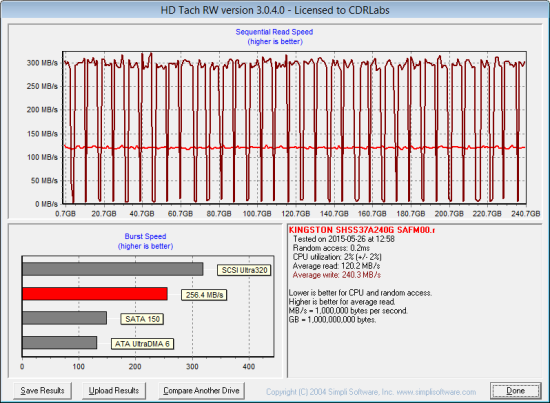
Kingston HyperX Savage 240GB - Dirty
To see how well the HyperX Savage could recover, I let the computer sit for about an hour and a half and then reran the test. The drive's average write speed climbed up to 278.3 MB/s. However, its read speed lagged behind, averaging out at 124.0 MB/s.
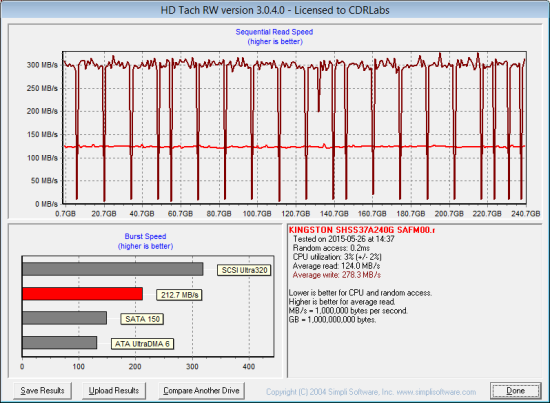
Kingston HyperX Savage 240GB - After Trim
Lastly, I used Parted Magic to perform a secure erase on the HyperX Savage. With the drive wiped clean, it had average read and write speeds of 377.5 MB/s and 374.0 MB/s, respectively.

Kingston HyperX Savage 240GB - Secure Erase
Final Thoughts:
Kingston has knocked another one out of the park with its new HyperX Savage SSD. This eye-catching, low profile drive combines Phison's quad-core, eight channel PS3110-S10 controller with Toshiba's Advanced 19nm (A19) MLC NAND flash to deliver some truly impressive performance. In our sequential read and write tests, the 240GB version of the HyperX Savage was able to read at speeds as high as 565 MB/s and write at speeds in excess of 495 MB/s. The drive also did very well in our random write tests, producing more than 86,000 IOPS at low queue depths.
Aside from its good looks and impressive performance, what really makes the HyperX Savage stand out from the competition is the upgrade bundle kit. The kit includes everything you need to install the drive in your existing desktop or notebook computer, including a 2.5" USB 3.0 enclosure, 3.5" bracket, SATA data cable, multi-bit screwdriver and Acronis data migration software.
The HyperX Savage is available now in 120GB, 240GB, 480GB and 960GB capacities. Prices on Amazon.com currently range from about $68 up to $581, with the 240GB upgrade bundle kit reviewed here going for about $129.

Highs:
- Available in 120GB, 240GB, 480GB and 960GB capacities
- Phison PS3110-S10 controller
- Excellent sequential read and write speeds
- Very good random read and write performance
- Performs equally well with compressible and incompressible data
- SATA 6Gb/s interface
- Available as stand-alone drive or as part of an upgrade bundle kit
- Good looking and well constructed design
- AES 256-bit encryption
- Includes 3.5" bracket, 9.5mm adapter and Acronis data migration software
- Upgrade bundle includes USB 3.0 enclosure, multi-bit screwdriver and SATA cable
- Reasonably priced
- 3 year warranty
Lows:
- Does not support DEVSLP
